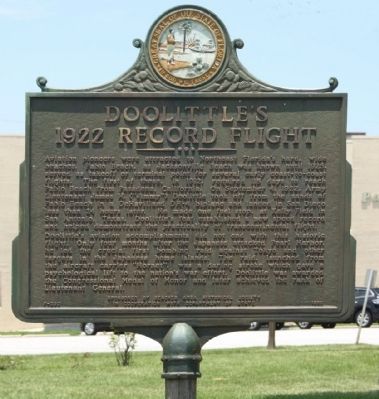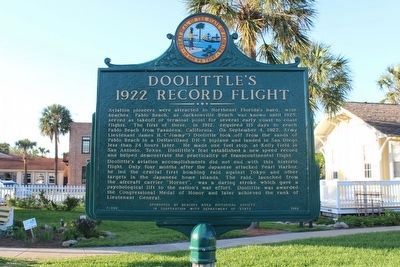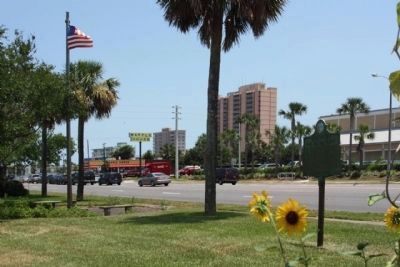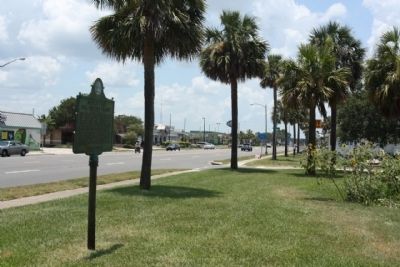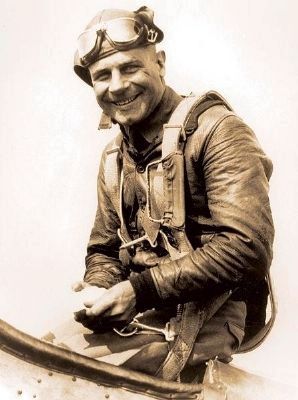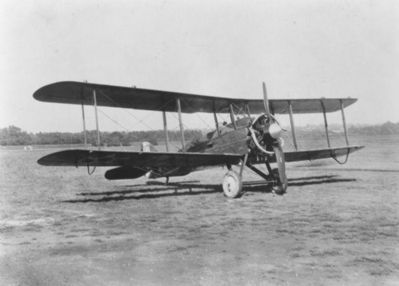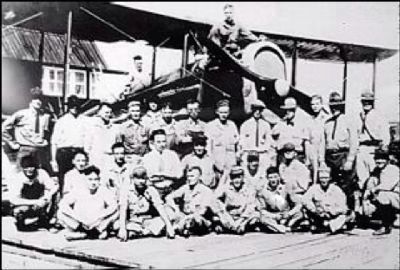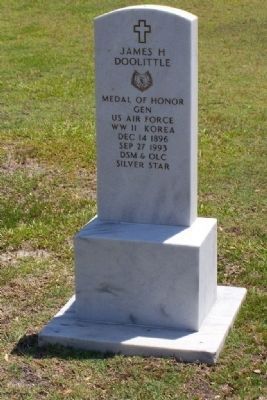The Beaches in Jacksonville Beach in Duval County, Florida — The American South (South Atlantic)
Doolittle's 1922 Record Flight
Erected 1980 by Beaches Area Historical Society in Cooperation with Department of State. (Marker Number F-293.)
Topics. This historical marker is listed in these topic lists: Air & Space • War, World II. A significant historical month for this entry is September 1892.
Location. 30° 17.307′ N, 81° 23.629′ W. Marker is in Jacksonville Beach, Florida, in Duval County. It is in The Beaches. Marker is on Beach Boulevard (U.S. 90) near N 5th Street, on the right when traveling west. Touch for map. Marker is in this post office area: Jacksonville Beach FL 32250, United States of America. Touch for directions.
Other nearby markers. At least 8 other markers are within walking distance of this marker. Pablo Beach FEC Foreman's House (a few steps from this marker); Porter Wood Burning Locomotive (a few steps from this marker); Steam Locomotive No.7 (within shouting distance of this marker); Oesterreicher-McCormick Homestead (within shouting distance of this marker); Pablo Beach Post Office (within shouting distance of this marker); First Settlers At Ruby, Florida (within shouting distance of this marker); Beaches Museum Chapel (within shouting distance of this marker); Mayport Depot (within shouting distance of this marker). Touch for a list and map of all markers in Jacksonville Beach.
Regarding Doolittle's 1922 Record Flight. On February 24, 1921, Lt. Wm. DeVoe Coney, in a transcontinental flight from San Diego California, landed at Pablo Beach, having made the flight in 22 hours and 17 minutes, beating the old record, set two years earlier, by 3 hours and 32 minutes. Coney's record was soon eclipsed on September 5, 1922 by Jimmy Doolittle piloting a De Havilland DH-4 biplane from Pablo Beach to San Diego in an elapsed time of 22 hours and 35 minutes.(Wikipedia)
Also see . . .
1. Jimmy Doolittle. ... Doolittle's most important contribution to aeronautical technology was the development of instrument flying. He was the first to recognize that true operational freedom in the air could not be achieved unless pilots developed the ability to control and navigate aircraft in flight, from takeoff run to landing rollout, regardless of the range of vision from the cockpit. ...
... He volunteered for and received General H.H. Arnold's approval to lead the top-secret attack of 16 B-25 medium bombers from the aircraft carrier USS Hornet, with targets in Tokyo, Kobe, Yokohama, Osaka, and Nagoya. On April 18, all the bombers successfully took off from the Hornet, reached Japan, and bombed their targets. ... (Submitted on July 17, 2012, by Mike Stroud of Bluffton, South Carolina.)
2. Doolittle Raiders Remembered. The Doolittle Raiders attacked military and industrial targets in several Japanese cities and their surprise attack on the previously untouched home islands of Japan is considered by many historians to be
a primary cause of the Japanese decisions that let to the Battle of Midway during which the Japanese lost four aircraft carriers. It was also symbolic as the United States first major strike back. (Submitted on July 21, 2012, by Mike Stroud of Bluffton, South Carolina.)
Credits. This page was last revised on March 5, 2024. It was originally submitted on July 17, 2012, by Mike Stroud of Bluffton, South Carolina. This page has been viewed 1,020 times since then and 20 times this year. Photos: 1. submitted on July 21, 2012, by Mike Stroud of Bluffton, South Carolina. 2. submitted on April 8, 2016, by Tim Fillmon of Webster, Florida. 3, 4. submitted on July 21, 2012, by Mike Stroud of Bluffton, South Carolina. 5, 6, 7, 8. submitted on July 19, 2012, by Mike Stroud of Bluffton, South Carolina.
